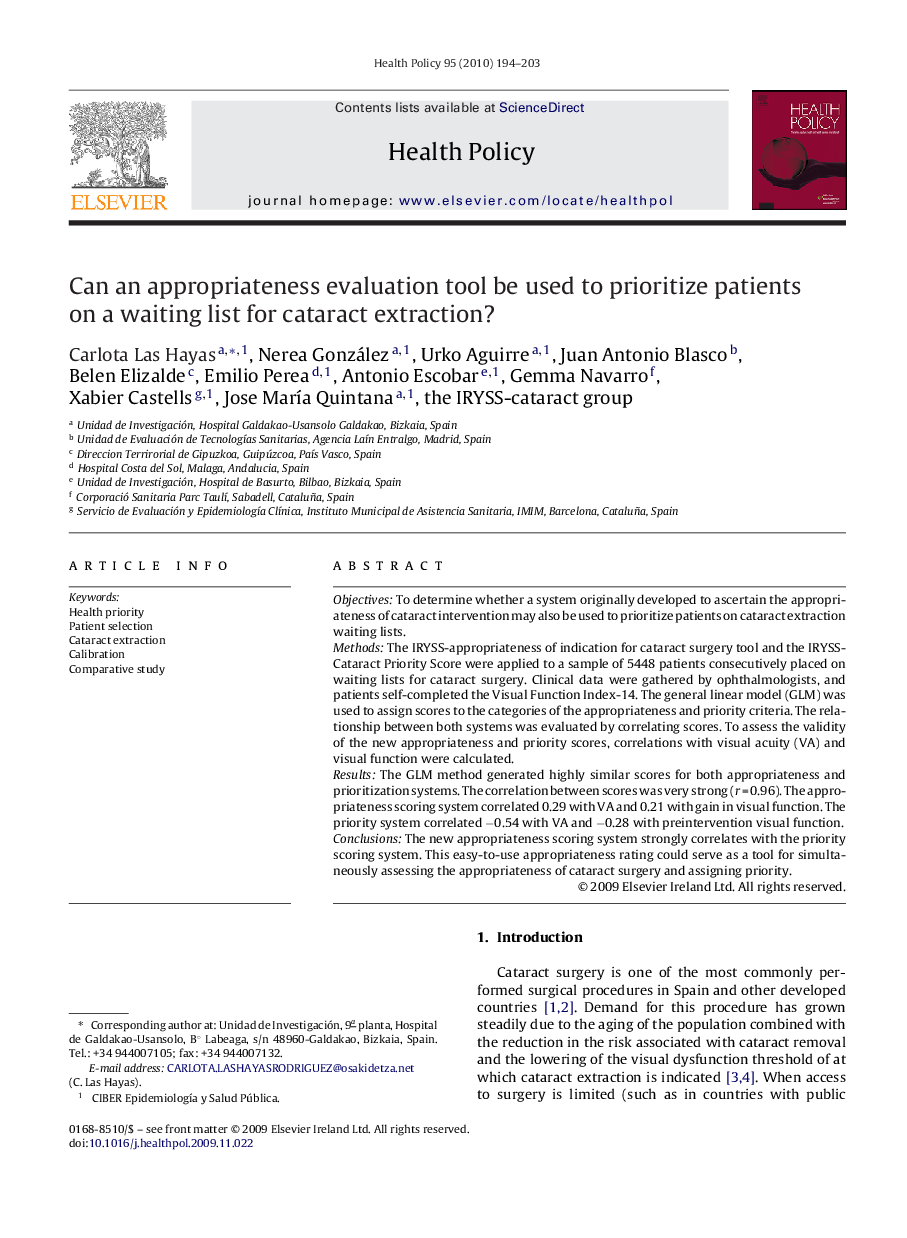| Article ID | Journal | Published Year | Pages | File Type |
|---|---|---|---|---|
| 4198341 | Health Policy | 2010 | 10 Pages |
ObjectivesTo determine whether a system originally developed to ascertain the appropriateness of cataract intervention may also be used to prioritize patients on cataract extraction waiting lists.MethodsThe IRYSS-appropriateness of indication for cataract surgery tool and the IRYSS-Cataract Priority Score were applied to a sample of 5448 patients consecutively placed on waiting lists for cataract surgery. Clinical data were gathered by ophthalmologists, and patients self-completed the Visual Function Index-14. The general linear model (GLM) was used to assign scores to the categories of the appropriateness and priority criteria. The relationship between both systems was evaluated by correlating scores. To assess the validity of the new appropriateness and priority scores, correlations with visual acuity (VA) and visual function were calculated.ResultsThe GLM method generated highly similar scores for both appropriateness and prioritization systems. The correlation between scores was very strong (r = 0.96). The appropriateness scoring system correlated 0.29 with VA and 0.21 with gain in visual function. The priority system correlated −0.54 with VA and −0.28 with preintervention visual function.ConclusionsThe new appropriateness scoring system strongly correlates with the priority scoring system. This easy-to-use appropriateness rating could serve as a tool for simultaneously assessing the appropriateness of cataract surgery and assigning priority.
